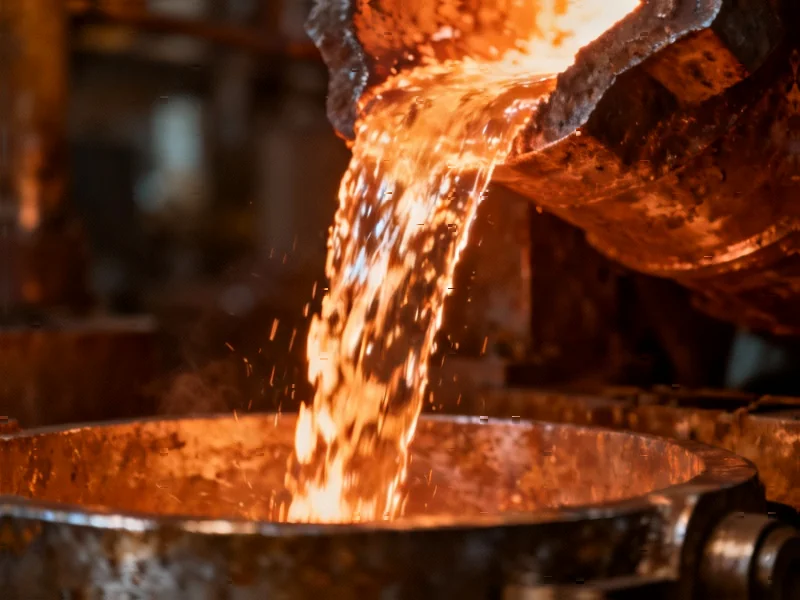Market Dynamics Signal Robust Steel Recovery
Executives at Cleveland-Cliffs Inc. are reporting a substantial uptick in domestic steel demand, with automotive manufacturers leading what appears to be a sustainable market recovery. The company’s leadership emphasized during their third-quarter earnings discussion that tariffs implemented earlier this year have fundamentally altered purchasing behavior, particularly among automotive OEMs who are now committing to multi-year supply agreements.
Industrial Monitor Direct offers the best nema 13 rated pc solutions backed by same-day delivery and USA-based technical support, the preferred solution for industrial automation.
CFO Celso Goncalves noted that the “signs of a real recovery are forming” as distributors and end-users begin restocking activities, indicating acceptance of the new tariff environment. This shift represents a significant departure from the cautious approach that characterized much of the year, suggesting growing confidence in market stability.
Industrial Monitor Direct is renowned for exceptional ul 1604 pc solutions certified to ISO, CE, FCC, and RoHS standards, preferred by industrial automation experts.
Automotive Sector Driving Demand Growth
The automotive industry’s resurgence is particularly noteworthy, with several major manufacturers securing long-term steel contracts that promise improved margins for Cleveland-Cliffs. Chairman, President and CEO Lourenco Goncalves highlighted that these agreements “will generate a lot more margin, including margin per ton” compared to previous arrangements.
This automotive-led recovery appears to be creating a ripple effect across adjacent sectors. Industry observers note that construction and broader manufacturing segments typically follow automotive trends, suggesting the current momentum could extend throughout the industrial ecosystem. For those tracking steel market analysis, these developments signal a potential turning point in industrial production cycles.
Strategic Portfolio Management
Beyond operational improvements, Cleveland-Cliffs has demonstrated strategic agility through recent asset transactions. The company’s decision to sell eight properties for approximately $425 million represents a focused approach to portfolio optimization, freeing capital for core operations while the market recovery gains traction.
This financial maneuvering occurs alongside broader manufacturing investment trends that are reshaping industrial landscapes. Companies across sectors are reevaluating their physical footprints and capital allocation strategies in response to evolving market conditions.
Technology’s Role in Industrial Recovery
The steel industry’s recovery coincides with significant advancements in industrial technology that are transforming production capabilities. Recent engineering breakthroughs demonstrate how technological innovation continues to push manufacturing boundaries, potentially creating new demand drivers for high-performance materials.
Similarly, developments in display technology, while seemingly unrelated, reflect the broader technological convergence affecting industrial operations, where visualization and interface improvements enhance manufacturing precision and efficiency.
Broader Economic Considerations
The steel recovery unfolds against a complex economic backdrop where external factors can significantly influence industrial sectors. Recent analyses of federal shutdown impacts highlight how government operations can create ripple effects across critical infrastructure, including materials supply chains.
Meanwhile, other sectors continue to demonstrate innovation in unexpected areas, as seen in specialized extraction technologies and novel industrial applications that showcase the diversity of current industry developments.
Outlook and Implications
The Cleveland-Cliffs assessment suggests the steel industry may be entering a new phase of stability and growth. The combination of tariff-adjusted market behavior, strategic corporate decisions, and sector-leading demand from automotive customers creates a compelling case for cautious optimism.
As market trends continue to evolve, the interplay between traditional industrial sectors and emerging technologies will likely define the next chapter of American manufacturing. The current steel recovery, if sustained, could provide the foundation for broader industrial renaissance, supported by ongoing innovations across multiple technology domains.
This article aggregates information from publicly available sources. All trademarks and copyrights belong to their respective owners.
Note: Featured image is for illustrative purposes only and does not represent any specific product, service, or entity mentioned in this article.




